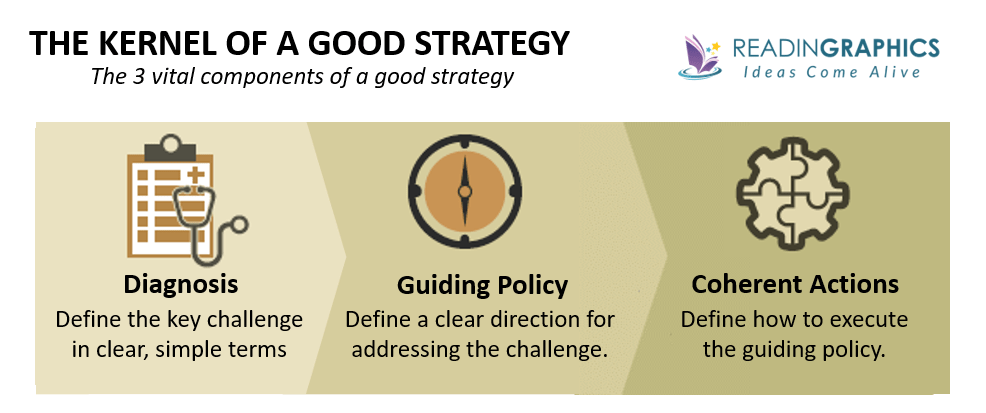Product Pillar 2: Strategy (Think)
Aligning Insights with Business Goals for Sustainable Growth
Defining the Path Forward
Armed with insights, the next step is to think strategically. Before jumping into execution, it’s essential to pause and understand the problem you're solving, the goals you're trying to achieve, and how your work aligns with the broader business objectives.

What does it mean to understand the problem?
Gather Context – Don’t rush to solve a problem without context. Take time to fully understand what’s at stake.
Align with Business Goals – Ensure that your product efforts align with the company's goals, whether it's driving growth, increasing engagement, or expanding into new markets.
Focus on the User – Keep the user front and center in your strategy. Solving their pain points is critical to product success.
Prioritize Effectively – Not every idea can be pursued. Use frameworks like RICE or MoSCoW to prioritize high-impact opportunities.
The Power of Good Strategy
As Richard Rumelt explains in Good Strategy/Bad Strategy, a "good strategy" focuses on a clear diagnosis of a critical challenge, a guiding policy to address it, and a set of coherent actions to implement that policy, while a "bad strategy" lacks this clear focus, often using vague language, failing to identify the real problem, and dispersing efforts across too many areas without a clear plan of action.
To enable good strategy, Rumelt states that “a talented leader identifies the one or two critical issues in the situation – the pivot points that can multiply the effectiveness of effort – and then concentrate action and resources on them.”
Marty Cagan’s article on Product Strategy supports Rumelt’s direction into how to decide which problems to solve with similar guidance:
Focus - Make tough choices to FOCUS on what’s really important (critical objectives for the business per guidance of product leadership)
Insights - Generate, identify and leverage INSIGHTS (from analyzing data & user feedback)
Action - Convert insights into ACTION.
Manage - Actively manage the effort without micro-managing.
Strategy Resources
Product Sense
Developing product sense is one of the most valuable skills a product manager can cultivate to help with improving features or creating new products.

“Product sense: the ability to usually make correct product decisions even when there is significant ambiguity.”
— Shreyas Doshi, ex-Stripe/Twitter/Google/Yahoo
“Product sense is the skill of consistently being able to craft products (or make changes to existing products) that have the intended impact on their users.”
— Jules Walter, YouTube/Slack Product
A modified framework I use for building product sense includes:
Motivations (Why are we building this? How does it fit into the vision and goals?)
Vision, Mission, Product/Business Goals
Trends, Opportunities, Strengths and Weaknesses
Users (Who are our users?)
Ecosystem
Segmentation
Pain Points (What are their needs?)
User Journey
Use Cases
Jobs To Be Done
Solution (What solutions address these challenges in a way that adds value?)
How you/your team addresses the challenges/threats
Product Sense Resources
How to develop product sense by Jules Walter (lennysnewsletter.com)
10-30-50 Product Management by Shreyas Doshi, Product Lead at Stripe (tryexponent.com)
Product Management Competencies Under STRATEGY:
Strategic Thinking
Stakeholder Management
Goal Setting
Conclusion

A well-defined product strategy serves as the guiding compass for product managers, ensuring that every decision and action is rooted in a deep understanding of both the users and the broader business landscape. By taking the time to gather context, prioritize effectively, and focus on critical issues, product managers can navigate the complexities of their roles and drive meaningful impact. With a solid strategy in place, teams are empowered to transform insights into actionable solutions, setting the stage for successful execution in the next phase of product development. As we move forward, let’s explore how to translate these strategic insights into effective tactics that drive results.





